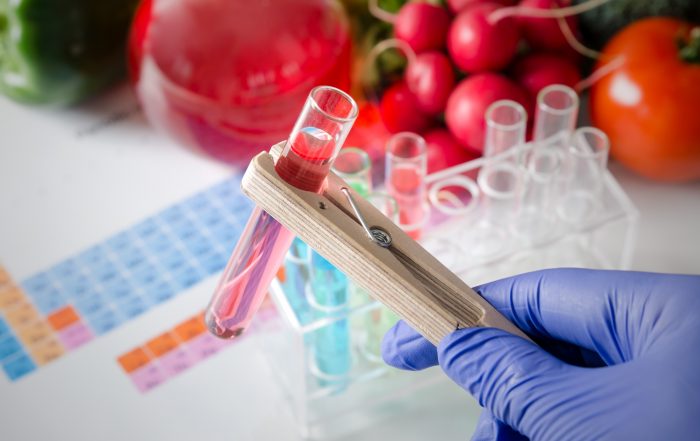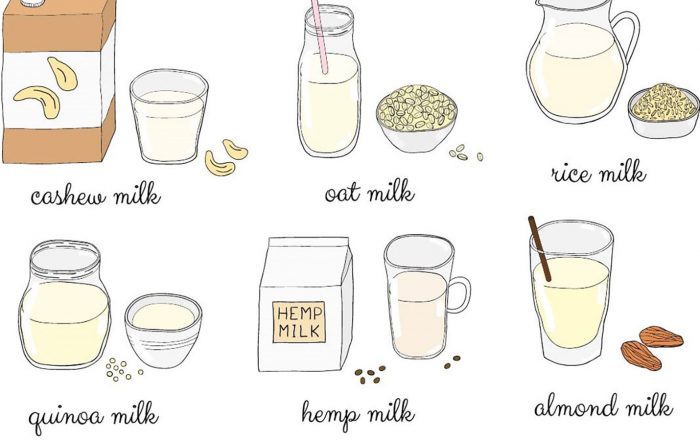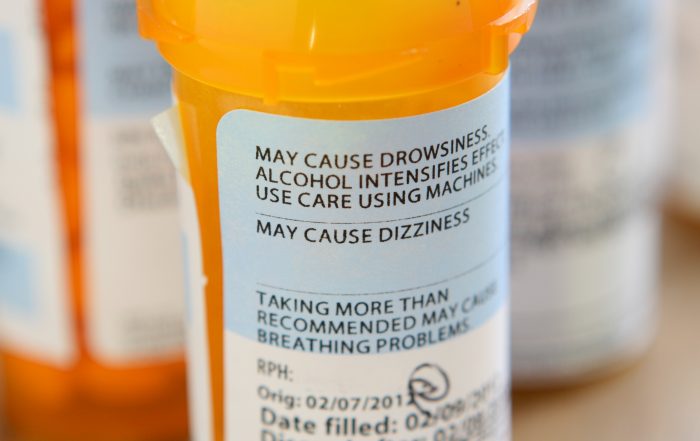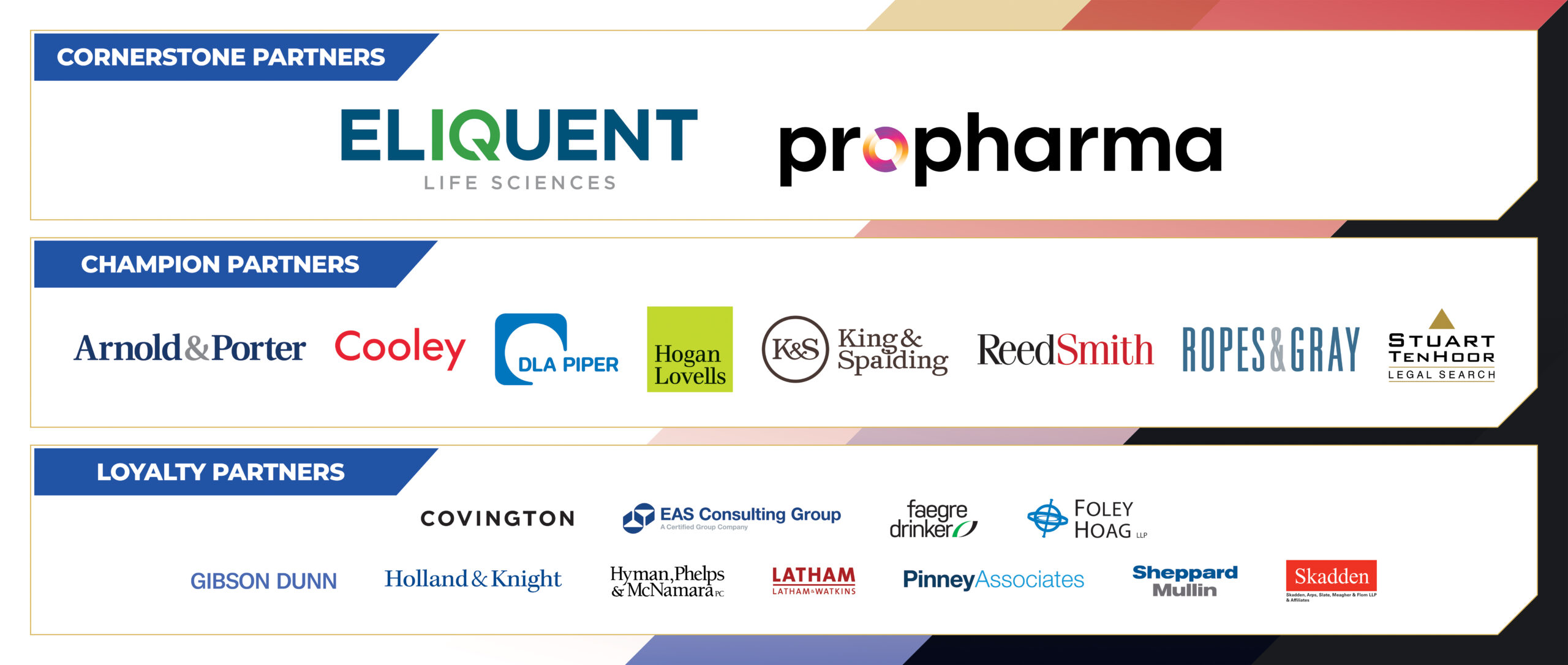
Food Additive Reform: Time to Repeal the Delaney Clause?
by Steve Armstrong and George E. Dunaif
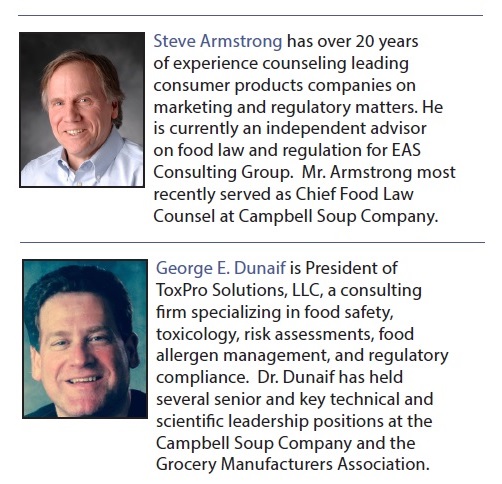 Last October, FDA took the unusual step of banning six synthetic flavors that it knew were safe and which consumers had been eating for many decades. But the agency had no choice. A petition by environmental and consumer groups claimed that these chemicals had been shown to cause cancer when fed to laboratory rodents in extremely high doses.1
Last October, FDA took the unusual step of banning six synthetic flavors that it knew were safe and which consumers had been eating for many decades. But the agency had no choice. A petition by environmental and consumer groups claimed that these chemicals had been shown to cause cancer when fed to laboratory rodents in extremely high doses.1
To say FDA was not amused would be an understatement. While going to great lengths to demonstrate, via detailed, quantitative risk assessments, that these artificial flavors posed no risk to public health, FDA said its action was required by the Delaney Clause, a 60-year-old provision of the Food, Drug, and Cosmetic Act (FDCA). Under the plain language of that clause, FDA may not approve any food additive—even one that is safe—if it is “found to induce cancer” in laboratory animals.2
The action cast new light on whether this antiquated provision of the FDCA has any continuing utility. FDA made it abundantly clear in its announcement that the Delaney Clause interfered with its ability to apply science to assess the safety of food additives: “The Delaney Clause is a strict legal standard that precludes FDA from using its expertise to evaluate a substance under its intended condition of use and its risk to public health.”3 While the activists celebrated FDA’s decision, the flavor and extract industry signaled that now may be the time to revisit this provision, which was adopted at a time when little was understood about cancer or its origins, and only a handful of chemicals were known carcinogens.
Indeed, activist groups, including some of the petitioners, have been calling for reform of the food additive system, greater oversight of more chemicals and a “zero tolerance”4 for certain chemicals. However, it would appear that, notwithstanding the result they achieved in this instance, repealing this 60-year-old section of the FDCA—and giving FDA the freedom to apply soundly reasoned, well-established science across the board—could be an important first step toward aligning the food additive provisions of the Act with a 21st century understanding of cancer risk assessment.
Background to FDA’s Action
The six synthetic flavoring agents, bearing names that only a flavorist or extract scientist could love, all have chemically identical, natural counterparts: benzophenone (grapes), methyl eugenol (basil), ethyl acralate (pineapple), myrcene (thyme), pulegone (peppermint) and pyridine (coffee).5 While the names may sound unfamiliar or off-putting, these flavors had been used in foods for decades to mimic, and even enhance, naturally occurring flavors and impart subtle flavor notes in ice cream, baked goods, candy, beverages, and chewing gum.6
The synthetic flavorings had enjoyed a long history of safe use at very low levels that were inherently self-limiting. They had been placed on the list of approved food additives back in 1964.7 Although the synthetic flavorings and their natural counterparts are chemically identical, FDA stressed that its action affected only the synthetic versions of these flavors. The natural versions of these same substances were allowed to remain in the food supply.8
FDA took the decision in response to a Citizen Petition and litigation initiated by a coalition of environmental and consumer groups, including the Natural Resources Defense Council (NRDC), Center for Environmental Health (CEH), Environmental Defense Fund (EDF), Center for Food Safety (CFS), and Center for Science in the Public Interest (CSPI). The activists presented evidence from publicly funded studies conducted by the National Toxicological Program (NTP) of the U.S. Department of Health and Human Services (HHS) showing that laboratory rodents who ate animal feed containing extraordinarily high concentrations of these substances did, indeed, develop tumors.9 FDA questioned the relevance of these findings, while detailing the safety of the synthetic flavors under the applicable regulatory standard for approving food additives.10 The agency did not disguise its disagreement with the result forced upon it by the Delaney Clause. FDA said the substances “are unlikely to pose a potential or significant carcinogenic risk for humans at the levels [they] are used in foods, and that the use of these food additives is safe for human consumption.”11 The agency didn’t stop there:
In other words, FDA has a reasonable certainty that the substances do no harm under the intended conditions of use (the standard for approving food additives). However, because data submitted by the petitioners demonstrate that these synthetic flavorings have been shown to induce cancer in animal studies, FDA cannot consider these synthetic flavorings to be safe as a matter of law because of the Delaney Clause…12
Thus, FDA clearly does not believe that a decision forced upon it “as a matter of law” has made consumers any safer. FDA, an agency that takes care to ground its decisions in sound, well-reasoned science, was not able to do so in this instance. While the activists achieved their desired objective, FDA’s evident distaste for the result could signal that it is long past time to repeal or limit the Delaney Clause and to assure that contemporary methodologies of cancer risk assessment are applied consistently in the food additive approval process.
Reactions to FDA’s Announcement
The coalition of groups that initiated the petition hailed FDA’s decision as a victory for public health. “We think this is a win for consumers,” said Erik Olson of the NRDC, “[o]ur petition laid out the science… The law is very clear that any chemical that causes cancer is not supposed to be added to our food supply.”13 The petitioners also said the ban was justified as a matter of consumer transparency. They pointed out that under the applicable regulations, these synthetic flavorings were typically labeled as “artificial flavors,” meaning, they argued, that “hidden carcinogens” were “lurking” in the foods consumers were feeding their families.14 After FDA announced its decision, a scientist for the Center for Environmental Health (CEH) paused to consider how the petitioners had helped satisfy the ongoing consumer demand to know how food is made and where it comes from: “Consumers’ awareness is increasing all the time, and this is just part of that larger trend. More and more, I think people just want real food.”15
In the flavor and extract industry, the FDA announcement caused momentary confusion, as companies tried to make sense of what the agency had done and how they would have to adjust their product portfolios. FDA was banning the artificial flavors, but not their chemically identical counterparts, and at the same time leaving the artificial flavors in the food supply for two more years to give industry time to find substitute flavorings. One thing was certain, namely, that flavorists had lost some tools with which to work their magic of mimicking and enhancing flavors and aromas found in nature.16 At the same time, the decision brought home the reality that an atmosphere of mistrust and misunderstanding clouds the work of flavor scientists and the materials they use.17
The Flavor and Extract Manufacturers Association (FEMA) issued a statement echoing FDA’s assessment that the synthetic flavors were safe, and that the ban was solely the result of “the rigid language” of the Delaney Clause. FEMA’s statement pointed out that the path to reform lies through Congress:
Today, scientists and regulators all over the world understand the difference between a potential hazard identified in a high-dose rodent study and actual risk to consumers. At various times over the last several decades, there have been concerns raised about the Delaney Clause by members of Congress, the General Accounting Office and food safety experts, since the provision doesn’t allow FDA to consider risks based on modern day scientific understanding. It requires an act of Congress to change the 1958 Delaney Clause.18
The need for reform was evident in each passage of FDA’s announcement in the Federal Register, where it repeatedly and painstakingly applied the tools of quantitative risk assessment to assure the public that each of these flavors was safe under its conditions of intended use.19 Public health had not been at risk, nor would it be during the transition period. Whether FDA intended it or not, the analysis provided a fairly clear signal that the Delaney Clause was based on outdated science and perhaps, in line with FEMA’s statement, a not-so-subtle suggestion that the clause should be amended or dropped altogether.
The Law
To understand all of this, it helps to step back and consider the Delaney Clause in its historical context. The provision was adopted as part of the 1958 Food Additives Amendment, which set up the current system of food additive oversight. At the time, the country was experiencing a revolution in food processing. Synthetic chemicals by the hundreds were being introduced to enhance food flavors, extend shelf life and make possible many other features that consumers desired and eagerly embraced.
However, before the adoption of the Food Additives Amendment, FDA did not have the power to prevent the introduction of potentially harmful food additives. The agency could only take enforcement action after a product had entered commerce and after the agency had gathered evidence to show that it was adulterated and potentially harmful.
The Food Additives Amendment, however, gave FDA the authority to review the safety of food additives before they entered the market.20 Since thousands of food ingredients, synthetic and otherwise, were already being consumed without any evidence of harm, Congress determined, on the advice of FDA, that the premarket approval requirement would not apply to substances that were Generally Recognized As Safe (GRAS) because of a long history of safe use, scientific consensus on safety by experts qualified to make such judgments or prior sanctioned review.21 However, for novel food ingredients and colorants, FDA was directed to undertake a premarket assessment, which FDA defined as a process of establishing “reasonable certainty in the minds of competent scientists that the substance is not harmful under conditions of its intended use.”22
At the time, FDA scientists were already applying quantitative risk assessment methodologies for determining whether a substance was safe for human consumption. They were using a widely recognized formula for establishing an “acceptable daily intake,” i.e., the threshold below which no safety concerns would exist.23 However, cancer, a much feared and little understood health concern, was treated differently. Congressman James Delaney of Queens, New York, whose wife was battling cancer at the time, introduced a proposal reflecting a common understanding that no level of a carcinogenic chemical could be shown to be safe and that any amount could present a serious risk of cancer.24 Based on this understanding, Congressman Delaney’s proposal put a very specific crimp onto FDA’s discretion to approve food and color additives, requiring that “no additive shall be deemed safe if it is found to induce cancer when ingested by man or animal,” including cancer induced via “appropriate” testing of laboratory animals.25
This was an absolute prohibition. It took no account of actual risk and represented a marked departure from the bedrock principle of toxicology that “the dose makes the poison.”26 Congress was clearly concerned about the “many unknowns about cancer,” especially experiments showing that even molecular levels of a substance could attach to human DNA and give rise to abnormal, cancerous cell growth. Indeed, at the time, even FDA took the position that the available evidence did not support establishing thresholds below which carcinogens would not be dangerous. Members of Congress and FDA also believed the Delaney Clause would have limited effect, since only a small number of chemicals were shown to be animal carcinogens.27
However, scientific understanding of cancer risk rapidly evolved. As the number of substances suspected of being carcinogenic increased and detection methodologies improved, FDA saw quantitative risk assessments of trace amounts of substances running repeatedly into the rigid requirements of the Delaney Clause. The law provided little or no help in addressing this dilemma. Although the Delaney Clause forbids approval of an additive found to “induce cancer,” the law fails to define either of these terms. Nor does it provide guidance as to whether or to what extent FDA may consider new theories or information in applying the law. Is FDA permitted to exercise discretion and use modern scientific understanding in interpreting these terms? The Delaney Clause is silent on these matters.28 As a result, FDA made efforts when possible to avoid having to apply the clause.29 It was rarely used as an enforcement tool, and when it was applied, as with saccharin, for example, the action sometimes proved controversial.30
For a time, FDA attempted to limit the Delaney Clause by not applying it where the level of a carcinogenic chemical was de minimis. The agency took the position that it could disregard such a chemical if the additive were deemed safe.31 FDA took encouragement from a court decision holding that the agency had inherent authority to withhold regulatory action in de minimis situations.32 However, in a case involving disputed color additives, the court found nothing in the legislative history of the Delaney Clause to suggest that FDA had implicit authority to avoid the provision where human exposure to a purported carcinogen was de minimis.33 The court held that the Delaney Clause eliminated FDA’s discretion once laboratory testing showed that a substance produced a tumor in a test animal. The court agreed with FDA’s scientific assessment that the risks of the disputed color additives were trivial—the equivalent of eating one peanut every 250 days or spending 17 days a year in Denver with its higher elevations and radiation levels—but the court decided, “with reluctance,” that the Delaney Clause was not subject to a de minimis exception. Creating such an exception would require an act of Congress.34
Evolution of Scientific Understanding of Cancer and Food
The Delaney Clause may have represented revolutionary thinking in the 1950s and was no doubt appropriate for its time and the state of the science. However, FDA’s decision on the coalition’s petition, and its lengthy justification of the safety of the six synthetic flavors, suggests that today, it is fitting for toxicologists, regulators, lawyers, and food safety practitioners on all sides of the discussion to take a moment and consider whether it is time for a new scientific, legal, and regulatory paradigm.
This would be especially important for any innovative ingredients that function effectively at very low levels yet may have the ability, as shown in the NTP studies, to initiate and/or promote cancer in experimental models when fed to test animals at very high levels that equate to highly stressed exposure levels and circumstances that are on the extremes of in vivo model systems for the study of carcinogenesis. Indeed, the old maxim still holds. As Paracelsus (1493-1541), the great-grandfather of modern toxicology, famously wrote in the 16th century: “All substances are poison: there is none which is not poison. The right dose differentiates a poison and a remedy.”
The main goal of any food safety legislation and resulting regulations should be first and foremost the protection and preservation of human life. In 1958, cancer was recognized, as it is today, as a significant source of human suffering, morbidity, and mortality. But, as noted, the underlying natural history and etiology of cancer was poorly understood in 1958. As a result, and in an abundance of caution, the Delaney Clause was crafted with the understanding that food additives might play a significant role in human carcinogenesis.
Fast-forward to the present, and it is clear that science in broad and significant ways is light years beyond the understanding of the leading scientific minds of 1958. Today, three general areas of advanced scientific thinking and research are of particular importance with respect to what actually can influence carcinogenesis. Each of these areas requires sophisticated, interdisciplinary thinking: (1) the research interface of toxicology, oncology, and molecular genetics, (2) the interface of nutrition and diet with cancer research, and (3) the research interface of science and instrumentation in analytical chemistry.
How do these research areas impact how we might think about the Delaney Clause today? The historical writings of two founding scientists of the study of diet and cancer, Drs. John Weisburger and T. Colin Campbell, can provide the necessary insights. Both of these researchers not only helped to define and advance diet and cancer thinking, but they also contributed a plethora of outstanding basic research studies and learned writing to support their positions. 35
Dr. Weisburger published a key article in the widely respected journal Fundamental and Applied Toxicology in 1994 that was entitled, “Does the Delaney Clause of the U.S. Food and Drug Laws Prevent Human Cancers?”36 Essentially, Dr. Weisburger wrote that the Delaney Clause was established based on the scientific knowledge on causes of cancer and mechanisms of carcinogenesis at the level known to the scientific experts in the late 1950s. Dr. Weisburger made an eloquent case based on the intervening 36 years of scientific research and progress in order to rework the simplistic approach offered in the Delaney Clause. Dr. Weisburger’s analysis focused on specific carcinogen types, those being chemicals that are identified as DNA-reactive or specifically genotoxic by use of advanced in vivo and in vitro methodologies that have been further refined and advanced since the publication of his commentary. Essentially, Dr. Weisburger used a genomic approach for explaining why only a very few types of chemicals used as additives in the food supply presented any reasonable risk of initiating or promoting cancer at their levels of intended use.37
Dr. T. Colin Campbell, still active today, took an approach that was more holistic in nature in his exploration of how diet per se could influence cancer development in humans and animals. Not surprisingly, Dr. Campbell, along with his colleague, Dr. Johnnie Hayes, also wrote a thoughtful piece on food additives and contaminants that included a section on the Delaney Clause in the third edition of Casarett and Doull’s textbook Toxicology: The Basic Science of
Poison, also known as “The Toxicologist’s Bible,” published in 1988. Dr. Campbell questioned the simplicity of the Delaney Clause and called out that cancer is a complex, multifactorial, multi-staged and multi-mechanistic disease. Further, Dr. Campbell explained that at the time of the passage of the Delaney Clause, the state of the art for analytical instrumentation routinely permitted detection of chemicals in parts-per-thousand concentrations levels.38 Today, the capability of creating reproducible levels of detection (LODs) has moved from parts per thousand to parts per million (ppm, 1 X10-6), to parts per billion (ppb, 1 x 10-9) and finally, to parts per trillion (ppt, 1 X 10-12). Put another way, one part per thousand is equivalent to about 9 seconds in a day, and one part per trillion represents about thirty seconds in one million years.
Why is this relevant to the Delaney Clause? Simply put, the ability to find minute, almost molecular levels, of a specific chemical in a food additive has increased by nine or more orders of magnitude. And what does this mean for the carcinogenic potential of such chemicals in the human? Many see this risk of promoting cancer by dietary exposure to extremely minute quantities of suspect carcinogens as essentially de minimis.
In 2006, Dr. Campbell published a groundbreaking and widely acclaimed book, The China Study,39 summarizing his extensive research of diet and cancer over seven decades. This study and numerous additional research studies have established clearly that the promotion of cancer is far more closely linked to the macro constituents of the diet rather than the micro constituents of any particular foodstuff. The macro constituents—fat, proteins, carbohydrates as well as total caloric intake—are the real driving factors in dietary-linked carcinogenesis. Dr. Campbell’s work reflects the widespread scientific consensus that environmental exposure to minute quantities of suspected and/or established carcinogenic chemicals in the diet, including direct or indirect food additives, probably play only a minor role in diet-related human carcinogenesis.40
The importance of macronutrients relative to diet and cancer research and carcinogenesis, taken along with the research findings of many cancer research scientists, including Drs. Weisburger and Campbell, is critical for assessing the ongoing usefulness, effectiveness, and appropriateness of the Delaney Clause in contemporary times. Clearly, the clause forces FDA to focus on the wrong things. Perhaps Dr. Weisburger framed the question best in 1994, “Does the Delaney Clause of the U.S. Food and Drug Laws Prevent Human Cancers?” The consensus answer is that it almost certainly does not.
Conclusion
The Delaney Clause clearly gives environmental and consumer activists an effective weapon against the purportedly carcinogenic additives they say are “lurking” in processed foods. A scientist with one of the groups that petitioned FDA put it this way: “There’s something so beautiful, so simple about this rule. If tests show that something causes cancer, then don’t put it in our food.”41
But of course, things aren’t so simple. Today, the Delaney Clause may have greater utility as a tool for the activists than as an effective means of evaluating food additive safety. Modern detection technology and advanced research are revealing the ubiquity of potential carcinogens coming from both natural and synthetic sources. Are they really a threat? As FDA demonstrated in its assessment, tumors found in laboratory rodents do not necessarily cast light on the conditions necessary for human safety. Nor can cancer risk be minimized simply by “going natural” or eating “real food” if one does not give careful attention to the effects of macro-constituents of diet, exercise, and other critical health factors.42
All sides can probably agree, however, that consumers are confused and even frightened about the “chemicals” that have been added to their foods for generations. While there may be a “crisis of confidence” in processed foods, the interests of consumer safety and public health are clearly not served by stoking those fears. A debate over the continuing utility of the Delaney Clause could provide a forum where all interested parties—industry, FDA, the scientific community, and consumer advocates—could help to develop a unified approach for assuaging these concerns and leveraging contemporary scientific understanding to ensure a safe, wholesome food supply.
Update Magazine
February/March 2019
- Food and Drug Administration, Federal Register, 2018: “Food Additive Regulations; Synthetic Flavoring Agents and Adjuvants,” 83 Fed. Reg. 50,490-50,502 (Oct. 9, 2018); see also Constituent Update: FDA Removes 7 Synthetic Flavoring Substances from Food Additives List,” October 5, 2018 https://www.fda.gov/Food/NewsEvents/ConstituentUpdates/ucm622475.htm. FDA did not act on the petitioners’ request to remove a seventh flavor, styrene, from the list. The agency had already done so because the substance was no longer in use. 83 Fed. Reg. 50,492.
- The Delaney Clause is incorporated into the food and color additive provisions of the Food, Drug, and Cosmetic Act (FDCA or the Act): FDCA § 409(c)(3)(A), 21 U.S.C. § 348(c)(3)(A) (food additives); FDCA § 721(b)(5)(B), 21 U.S.C. § 379e(b)(5)(B) (color additives).
- 83 Fed. Reg. 50,501.
- The petitioners asked that a “zero tolerance” for the synthetic flavors be written into the regulations. FDA informed them that a food additive petition must either propose a regulation prescribing conditions of safe use or request amendment or repeal of an existing regulation. Establishing “zero tolerances” for substances was “not the proper subject of a food additive petition.” 83 Fed. Reg. 50,491, citing FDCA § 409(b)(1), 21 U.S.C. § 348 (b)(1).
- 83 Fed. Reg. 50,493.
- Food Dive, “FDA bans 7 synthetic flavoring substances,” by Cathy Siegner, Oct. 8, 2018, https://www.fooddive.com/news/fda-bans-7-synthetic-food-flavoring-substances/539057/.
- 21 CFR 172.515, Synthetic flavoring substances and adjuvants, proposed rule published May 27, 1964, 29 Fed. Reg. 6957.
- FDA said its action “does not affect the legal status of foods containing natural counterparts or non-synthetic flavoring substances extracted from food, and there is nothing in the data FDA has reviewed in responding to the pending food additive petition that causes FDA concern about the safety of foods that contain natural counterparts or extracts from such foods.” 83 Fed. Reg. 50,493.
- The petitioners also cited assessments by the International Agency for Research on Cancer (IARC) and California’s Office of Environmental Health Hazard Assessment (OEHHA), which administers the state’s Proposition 65 chemical disclosure law. However, FDA noted that these assessments were based primarily on the NTP findings. 83 Fed. Reg. 50,493.
- The standard that FDA established by regulation requires “reasonable certainty in the minds of competent scientists that the substance is not harmful under conditions of its intended use.” See 21 CFR 170.3(i) (definition of “safety”).
- 83 Fed. Reg. 50,493.
- Id. (emphasis added).
- From National Public Radio, “FDA Bans 7 Synthetic Food Additives After Environmental Groups Sue,” by Allison Aubrey, Oct. 6, 2018, https://www.npr.org/sections/the-salt/2018/10/06/655135633/fda-bans-use-of-7-synthetic-food-additives-after-environmental-groups-sue.
- Center for Environmental Health press release, “Advocates sue FDA to force decision on cancer-causing chemicals in popular foods,” May 2, 2018, https://www.ceh.org/news-events/press-releas-es/content/advocates-sue-fda-force-de-cision-cancer-causing-chemicals-pop-ular-foods/.
- Sierra, the national magazine of the Sierra Club, “Have You Been Snacking on Cancer-Causing Chemicals?” by Katie O’Reilly, Oct. 27, 2018, quoting Caroline Cox of the Center for Environmental Health, https://www.sierraclub.org/sierra/have-you-been-snacking-cancer-causing-chemicals.
- The New Food Economy, “How activists forced FDA to blacklist ‘carcinogenic’ flavor chemicals the agency says are safe,” by Nadia Berenstein, Oct.
18. 2018, https://newfoodeconomy.org/fda-carcinogenic-flavor-chemi-cal-food-additive-lacroix-lawsuit/. - Id.
- Flavor and Extract Manufacturers Association, “FEMA Addresses FDA Decision on NGO Petition on 7 Synthetic Substances,” Oct. 5, 2018, https://www.femaflavor.org/fda-an-nounces-decision-ngo-petition-7-syn-thetic-substances.
- 83 Fed. Reg. 50,493-50,500.
- FDCA § 409(a), 21 U.S.C. § 348(a).
- A GRAS ingredient is not a “food additive” for the purposes of the law. FDCA § 201(s), 21 U.S.C. § 321(s). In testimony to Congress at the time, FDA Commissioner George Larrick explained that this distinction was a simple matter of necessity: “We believe only those chemicals should be automatically exempted from the new law which are recognized among competent experts as safe for their intended use. This would make it unnecessary, for example, to do studies on table salt, but would not approve the continued use, without proof of safety, of the synthetic emulsifiers now widely used in some fabricated foods.” https://www.fda.gov/food/ingredientspackaginglabeling/gras/ucm094040.htm.
- 21 CFR 170.3(i).
- Richard A. Merrill, “Food Safety Regulation: Reforming the Delaney Clause,” Annual Review of Public Health, 1997, 18:313-340, at 322-23. https://www.ncbi.nlm.nih.gov/pubmed/9143722.
- Id.
- FDCA § 409(c)(3)(A), 21 U.S.C. § 348(c)(3)(A); FDCA § 721(b)(5)(B), 21 U.S.C. § 379e(b)(5)(B).
- Berenstein, supra, note 16.
- Merrill, supra, note 23, at p. 322.
- Merrill, supra, note 23, at pp. 328-9.
- FDA argued, for example, that the clause did not apply to constituents of additives or to pesticide residues. In 1996, Congress adopted the Food Quality Protection Act, which limited the application of the clause by removing pesticide residues from the definition of “food additive.” See Merrill, supra, note 23, at pp. 332-4.
- For a helpful discussion of how FDA has navigated the Delaney Clause, see Food Law in the United States, Michael T. Roberts, Cambridge University Press, New York, N.Y. (2016), at pp. 93-96.
- Roberts, supra, note 30 95-96 (citing a rule proposed by FDA in 1982). FDA has interpreted the animal feed exclusion in the Delaney Clause as allowing a de minimis exception where no residue is “found” in any edible portion of the animal. FDCA § 409(c)(3)(A)(i)-(ii), 21 U.S.C. § 348 (c)(3)(A)(i)-(ii). See also Merrill, supra, note 23 at pp. 323-5.
- Monsanto v. Kennedy, 613 F.2d 947 (D.C. Cir. 1979).
- Public Citizen v. Young, 831 F.2d 1108, 1122 (D.C. Cir. 1987); see also, Les v. Reilly, 968 F.2d 985 (9th Cir. 1992) (no de minimis exception for pesticide residues, which were treated as “food additives” at the time and therefore subject to the Delaney Clause).
- 831 F.2d 1108.
- In the interest of full disclosure, it should be noted that Dr. Dunaif completed his doctoral research in toxicology with an emphasis on the relationship of protein intake to diet and cancer under Dr. T. Colin Campbell at Cornell University.
- https://www.ncbi.nlm.nih.gov/pubmed/8056196.
- With the exception of methyl eugenol, FDA observed that modes of carcinogenicity identified in the NTP studies did not operate through genomic alterations and therefore were not relevant to humans. For methyl eugenol, the metabolic pathway in the rodent genome was not present in humans. In any event, the levels ingested by the animals were “very high test doses that likely overwhelmed physiological conditions of normalcy and overloaded systemic repair systems.” 83 Fed. Reg. 50,494.
- A similar point was made in Dr. Weisburger’s scientific commentary.
- The China Study: Startling Implications for Diet, Weight Loss and Long-Term Health, T. Colin Campbell and Thomas M. Campbell, published by BenBela Books, Inc. 2006.
- On the other hand, exposure to high levels of carcinogenic chemicals in the environment does play an important role in the initiation and promotion of cancer in several non-food exposure scenarios, such as smoking and long-term occupational exposure to high levels of various chemicals.
- Sierra magazine, supra, note 15, quoting senior scientist Caroline Cox of the Center for Environmental Health.
- And it must also be remembered that nature is not always benign. Aflatoxin, for example, is a naturally occurring mycotoxin that can contaminate a wide variety of natural foods, such as peanuts and milk, and it is also one of the most potent animal carcinogens known to food toxicologists.

